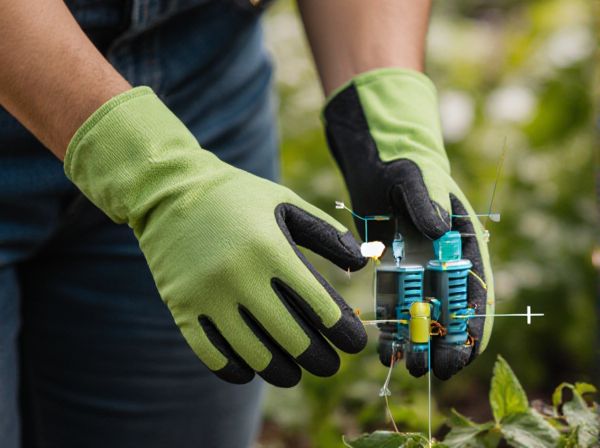
Dynamic accumulators vs shallow rooters Illustration
Dynamic accumulators enhance soil fertility by gathering nutrients from deep within the soil and storing them in their leaves, making these nutrients accessible when the leaves decay. Shallow rooters primarily improve surface soil structure and prevent erosion but lack the ability to draw nutrients from deeper layers. Integrating both strategies supports balanced nutrient cycling and healthy soil ecosystems.
Table of Comparison
| Feature | Dynamic Accumulators | Shallow Rooters |
|---|---|---|
| Root Depth | Deep roots penetrating soil layers | Surface-level roots spreading horizontally |
| Soil Impact | Improves nutrient cycling and soil fertility | Prevents erosion and stabilizes topsoil |
| Water Usage | Accesses deeper water reserves | Utilizes rainfall effectively near surface |
| Companion Plant Role | Extracts and accumulates nutrients for neighbors | Protects companion plants from soil erosion |
| Common Examples | Comfrey, Dandelion, Borage | Ryegrass, Clover, Vetch |
| Maintenance | Requires periodic harvesting to recycle nutrients | Minimal maintenance, natural ground cover |
Understanding Dynamic Accumulators in Gardening
Dynamic accumulators in gardening are plants that draw up and concentrate essential nutrients from deep within the soil profile, enhancing soil fertility and plant health. Unlike shallow-rooted plants that primarily absorb nutrients from the topsoil, dynamic accumulators access minerals from deeper layers, making them vital for nutrient cycling and soil regeneration. Incorporating species such as comfrey, nettle, and yarrow improves organic matter and supports sustainable gardening practices by naturally enriching the growing environment.
The Role of Shallow Rooters in Soil Health
Shallow rooters play a crucial role in enhancing soil health by improving soil structure and increasing organic matter near the surface. Their root systems facilitate aeration and promote microbial activity, which leads to better nutrient cycling and moisture retention. Compared to dynamic accumulators, shallow rooters primarily optimize topsoil quality, making them essential for maintaining a healthy and resilient ecosystem.
Key Differences Between Dynamic Accumulators and Shallow Rooters
Dynamic accumulators are plants known for their deep root systems that mine nutrients from subsoil layers, making them ideal for enhancing soil fertility and nutrient cycling. Shallow rooters have roots concentrated near the soil surface, which primarily stabilize topsoil and quickly absorb surface moisture but contribute less to deep nutrient accumulation. The key difference lies in their root depth and nutrient uptake capacity, with dynamic accumulators accessing and cycling minerals from deeper layers, while shallow rooters focus on surface-level soil health and erosion control.
Nutrient Uptake: Deep vs. Shallow Roots
Dynamic accumulators with deep roots enhance nutrient uptake by accessing minerals and trace elements from lower soil layers unreachable by shallow rooters. Shallow root systems primarily absorb nutrients from topsoil but may suffer in drought conditions or nutrient-depleted environments. Deep-rooted companions improve soil health and nutrient cycling, supporting more resilient plant growth and ecosystem sustainability.
How Dynamic Accumulators Improve Soil Fertility
Dynamic accumulators improve soil fertility by mining nutrients from deeper soil layers and concentrating them in their leaves, where they can be composted or used as mulch to enrich the topsoil. Unlike shallow-rooted plants that only access surface nutrients, dynamic accumulators enhance nutrient cycling by bringing essential minerals like nitrogen, potassium, and phosphorus closer to the root zone of companion plants. This natural nutrient redistribution supports healthier plant growth and reduces the need for synthetic fertilizers in sustainable gardening systems.
Benefits of Including Shallow Rooters in Your Garden
Shallow rooters enhance garden soil structure by improving aeration and water retention, promoting healthier plant growth. Their root systems support topsoil stability, reducing erosion while facilitating nutrient cycling essential for companion plants. Including shallow rooters encourages biodiversity, attracting beneficial insects and fostering a balanced, resilient garden ecosystem.
Best Dynamic Accumulator Plants for Home Gardens
Dynamic accumulator plants such as comfrey, yarrow, and nettle excel in home gardens by mining essential nutrients like potassium, calcium, and nitrogen from the soil and making them available for other plants. These species develop deep root systems that differ from shallow rooters like mint or basil, enabling them to access minerals beyond the reach of most garden plants. Incorporating dynamic accumulators promotes soil fertility, enhances plant health, and supports sustainable gardening practices.
Top Shallow Rooting Plants for Companion Planting
Top shallow rooting plants for companion planting include lettuce, radishes, and onions, which thrive by maximizing surface soil nutrients without competing deeply with neighboring plants. These dynamic accumulators, such as comfrey and borage, pull up essential minerals like potassium and calcium from deeper soil layers, enriching the topsoil when their leaves decompose. Combining shallow rooters with dynamic accumulators enhances nutrient availability and soil structure, promoting healthier and more productive garden ecosystems.
Integrating Dynamic Accumulators and Shallow Rooters for Optimal Growth
Integrating dynamic accumulators and shallow rooters enhances soil fertility and maximizes nutrient uptake by combining deep-rooted nutrient mining with surface-level moisture retention. Dynamic accumulators like comfrey extract minerals from deep soil layers, enriching topsoil, while shallow rooters such as mint stabilize surface soil and improve aeration. This synergy promotes healthier plant growth, improved soil structure, and sustainable ecosystem productivity.
Creating a Balanced Garden: Dynamic Accumulators and Shallow Rooters Working Together
Dynamic accumulators play a crucial role in enhancing soil fertility by drawing up nutrients from deep layers, while shallow rooters improve surface soil structure and moisture retention. Combining these companion plants creates a synergistic effect, promoting healthy nutrient cycling and supporting diverse plant growth. This balanced approach optimizes garden resilience and productivity by leveraging complementary root systems.
Dynamic accumulators vs shallow rooters Infographic

 gardendif.com
gardendif.com